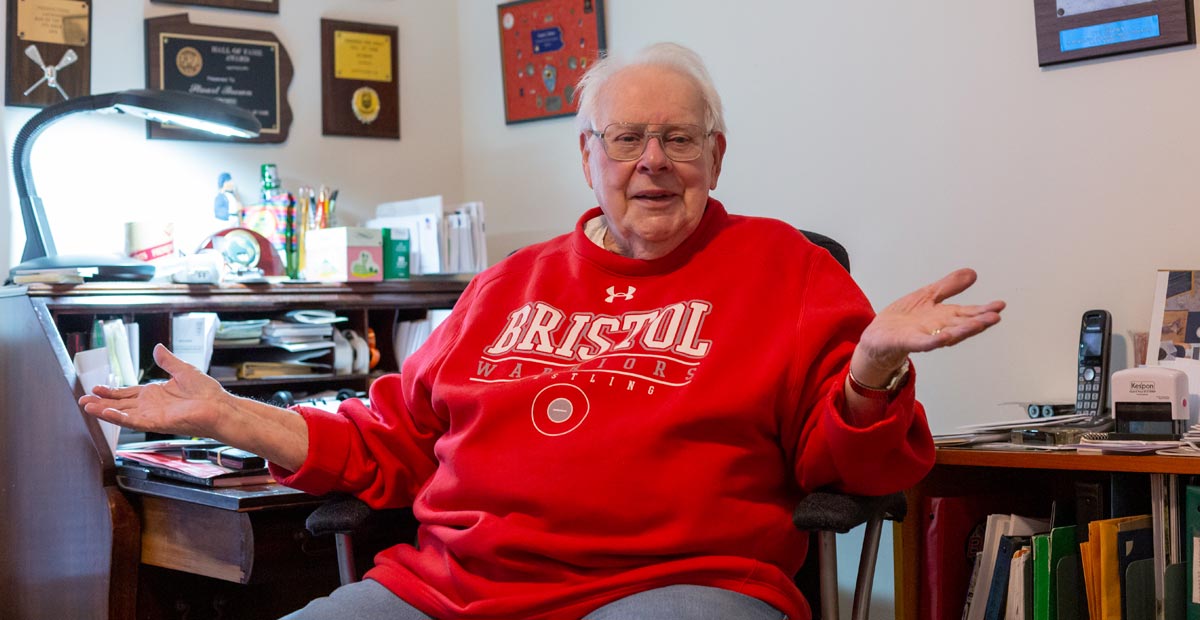Billy Graham; Roy Halladay; Aretha Franklin. These are just a few of the public figures who have influenced Stu Brown during his 90 years of life. Each time an idol passes, he makes a gift in his or her memory to his favorite charity. He also does this for friends and family.
“I could send a sympathy card, but the only person who makes out in that situation is Hallmark,” he says. “That’s why I sit down and write a check to the children’s home. I want the money to go somewhere I know it will make a difference in that person’s memory.”
Even though his wife passed away four years ago, Stu signs each gift, “Stu and Barbara Brown.” They were fortunate to be married for 60 years and to raise three children.
“We were passionate about the children’s home together, and it was always our money,” Stu said.
While the Browns were familiar with the children’s home from Stu’s involvement in Freemasonry, they learned the true power of the children’s home after they moved to Masonic Village at Elizabethtown in 2002.
“I have a soft spot in my heart for those kids, knowing what it’s like to grow up without a father,” he said. Stu lost his father when he was 13 years old, and his mother did the best she could to raise her four boys. “She did a fantastic job. In fact, looking back, I don’t know how she did it.” However, it wasn’t the same as growing up with both parents.
After graduating high school, Stu considered accounting. He completed one year of night school before he quit. “Accounting took me, because I couldn’t take it,” he jokes. At a crossroad, he was hired on a whim at Boeing, where he worked in inventory and material control, aiding in the building of helicopters. He spent 40 years at the company, never turning down a promotion. The 40-year retirement poster that hangs in Stu’s home lovingly refers to him as a “Rambo” in the boardroom.
“I liked to make people think outside the box,” he said. “Sometimes that challenge leads to innovation and making things better.”
In 1970, Stu took those leadership skills outside the boardroom and onto the field when he began coaching a junior high lacrosse team in his hometown of Springfield, Pennsylvania. It was a sport he enjoyed himself during his youth, and he eventually added girls’ softball to his coaching repertoire.
During his 22 years of coaching, Stu mentored youth by putting rules in place, but also by helping them understand that the game was about more than just wins and losses. Whenever there were doubts, he would ask the youth, “Did you do better today than you did yesterday?”
He made sure the kids called him “Stu,” not “Mr. Brown,” no matter how uncomfortable it may have made them. “I told them to call me ‘Stu’ because we were family,” he recalls. “Plus, ‘Mr.’ made me feel old.”
He ensured players who were less fortunate had access to the equipment they needed, making for an even playing field. “I believe a kid, is a kid, is a kid, and they need all the help they can get,” he says.
Stu sees this mentality come to life at the children’s home. “When you see what these kids grow up to do as adults, you know the children’s home is working,” he said. “If the kids take advantage of the opportunities they are provided with at the home, they’re golden for life.”
During the 2017 and 2018 renovation of the children’s home, Stu paid for one of the cottage’s basements to be remodeled. He believes play and study goes hand-in-hand, and he wanted the kids to have the proper place to do both.
“I can’t imagine where these kids would be if they didn’t have this place to come home to,” he said. “The children’s home will make these kids better people, which means we will have a better country in the future.”
Stu recently completed a Qualified Charitable Distribution (QCD), an annual gift from his IRA, to benefit the children’s home. QCDs can be counted toward satisfying Stu’s required minimum distribution (RMD) for the year. Plus, in addition to the benefits of giving to children in need, the QCD excludes the amount donated from taxable income, which is unlike standard withdraws from an IRA. By law, when a person reaches age 70 and a half, he or she is obligated to start withdrawing a RMD from his or her IRA. If they don’t need the income, donors may contribute part or all of their RMD to charity.
Inside his cottage, Stu enjoys glancing around his home office, which reminds him of his life’s work. It’s lined with professional awards, Masonic regalia and coaching and championship plaques. One refers to him as the “Father of Springfield Lacrosse.”
“I’m just your average guy who had some extra time, and now I’m an average guy who has some extra money that I want to share,” Stu says, “and I know I can’t take it with me.”

